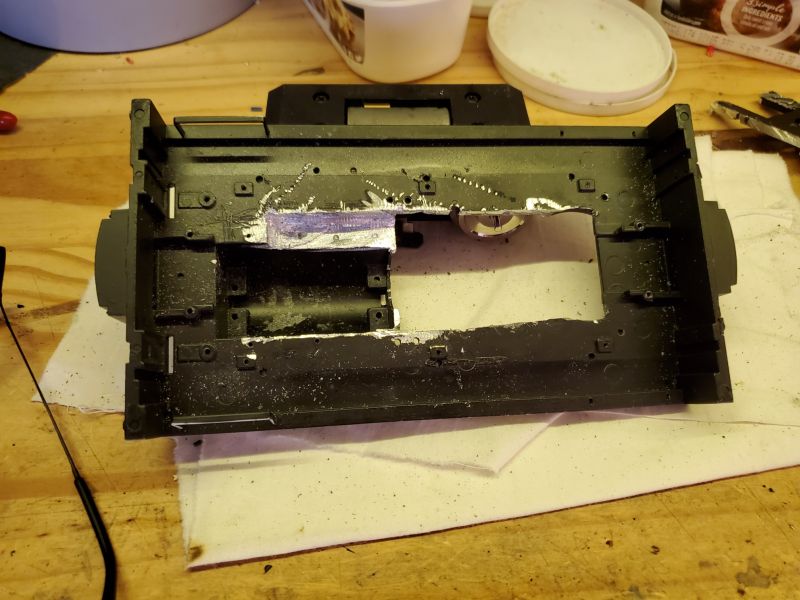With Diesel Dan restored and improved (Rehab of the Missile Sponges Part the First - Diesel Dan), the next locomotive is ready to enter the shops! Meet Christmas Thomas, a battery powered variant of an LGB m2075, as “he” backs into the shops for an overhaul:
Per “Opa,” a curious man with a white beard awaiting a northbound flight in the same terminal with my parents in November 2015 asked them to deliver this to the crew. In the years since, the coupler broke. We made one. The remote broke, so we removed it and installed the DPDT switch and speed control. The C batteries became prohibitively expensive. We installed a batter pack. The motor mount wore out. We fixed it. There is a lot of fun and a lot of learning packed into perhaps the worst product to bear the LGB label. We made “him” serve in ways “his” designers never intended, and he “earned” the overhaul. This will, hopefully, be the last fix for a while!
Like Diesel Dan, I hope to use this project to expand our skill base. When we breathed life into another m2075 Komaka Iki (C****hallenge Accepted - Large Scale Fantasy Locomotive), we ultimately repainted it and married it to a STAINZ chassis. These are the target skills:
- Successfully cut and reuse a chunk of the model. The used chassis has been a source of headaches, so this time we invested in a new motor block (Request Opinion – Smallbrook Studio Motor Block). This will require cutting into the existing chassis. I’ve never cut up a model before, so this will be a new skill and, frankly, my primary motive for undertaking this project in this manner.
- Lighting. I didn’t mess with lighting on Komaka iki. Since then, we’ve gotten more comfortable with soldering. The simple battery pack and, preexisting molding for cable conduits begs for an attempt at this.
- Wiring. I’d like the end products DPDT switch and throttle, if reinstalled, to be a little more integrated into the finished product. I am also seriously considering another GSscale Graphics Magnetic Critter Controller for this project. All of this is to gain stepwise experience to maybe someday convert my LGB Mogul to R/C.
- Interior Details. We spent some time late last year at the Hawaii Historical Railroad photographing cab interiors. A lot will be determined by where the wires run. It may be simply an engineer for this project! As every, durability trumps details in our projects.
There is a unique challenge here. The crew has decided I must preserve the Christmas markings so that Christmas Thomas can continue to serve as the Tree Train. We are going to have to fashion removable doors and saddle tank sides to do that. Magnets and metal sheets? Bolted on styrene?
I’ll get some photos up later to frame the project a bit better.
Eric

